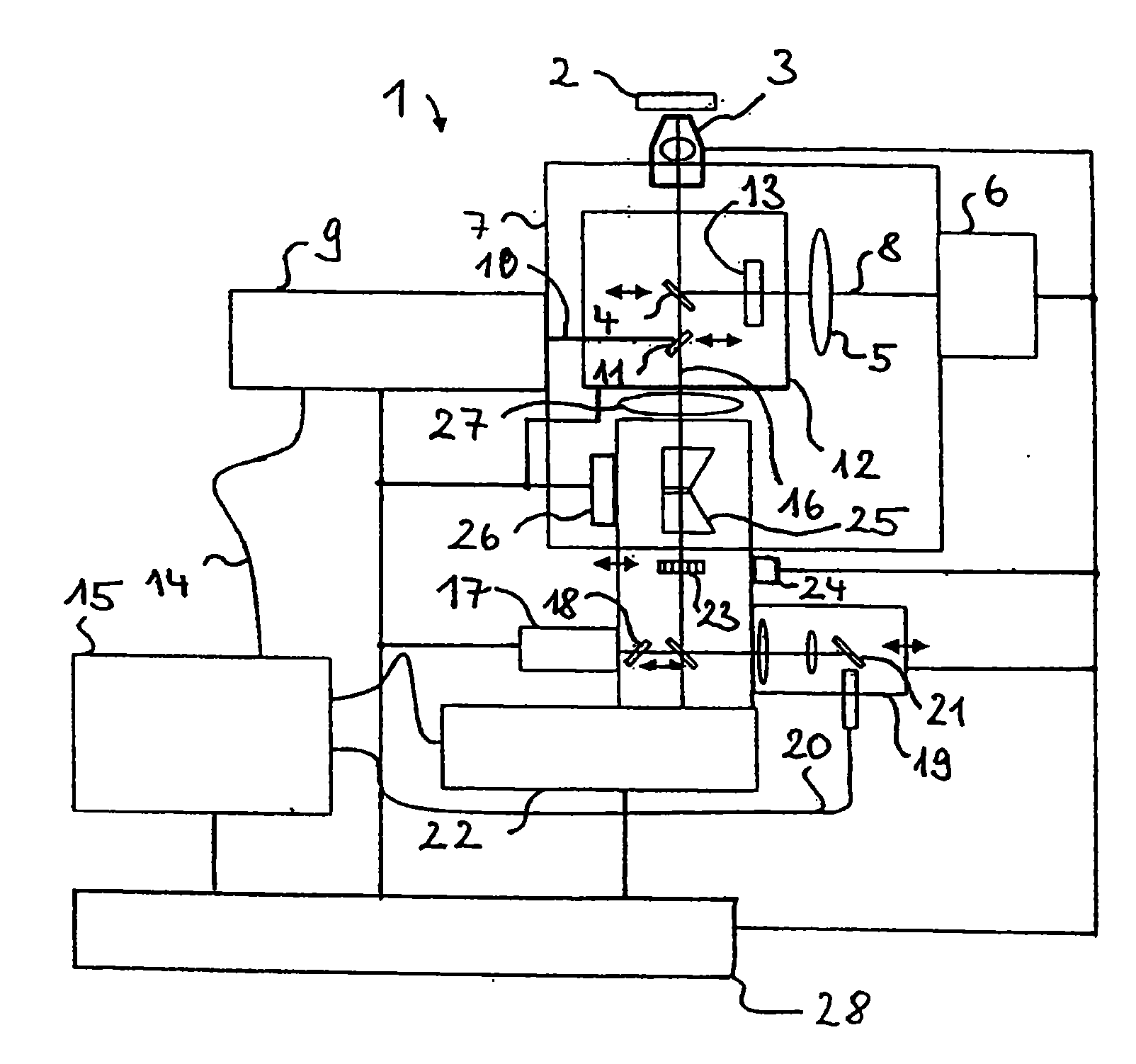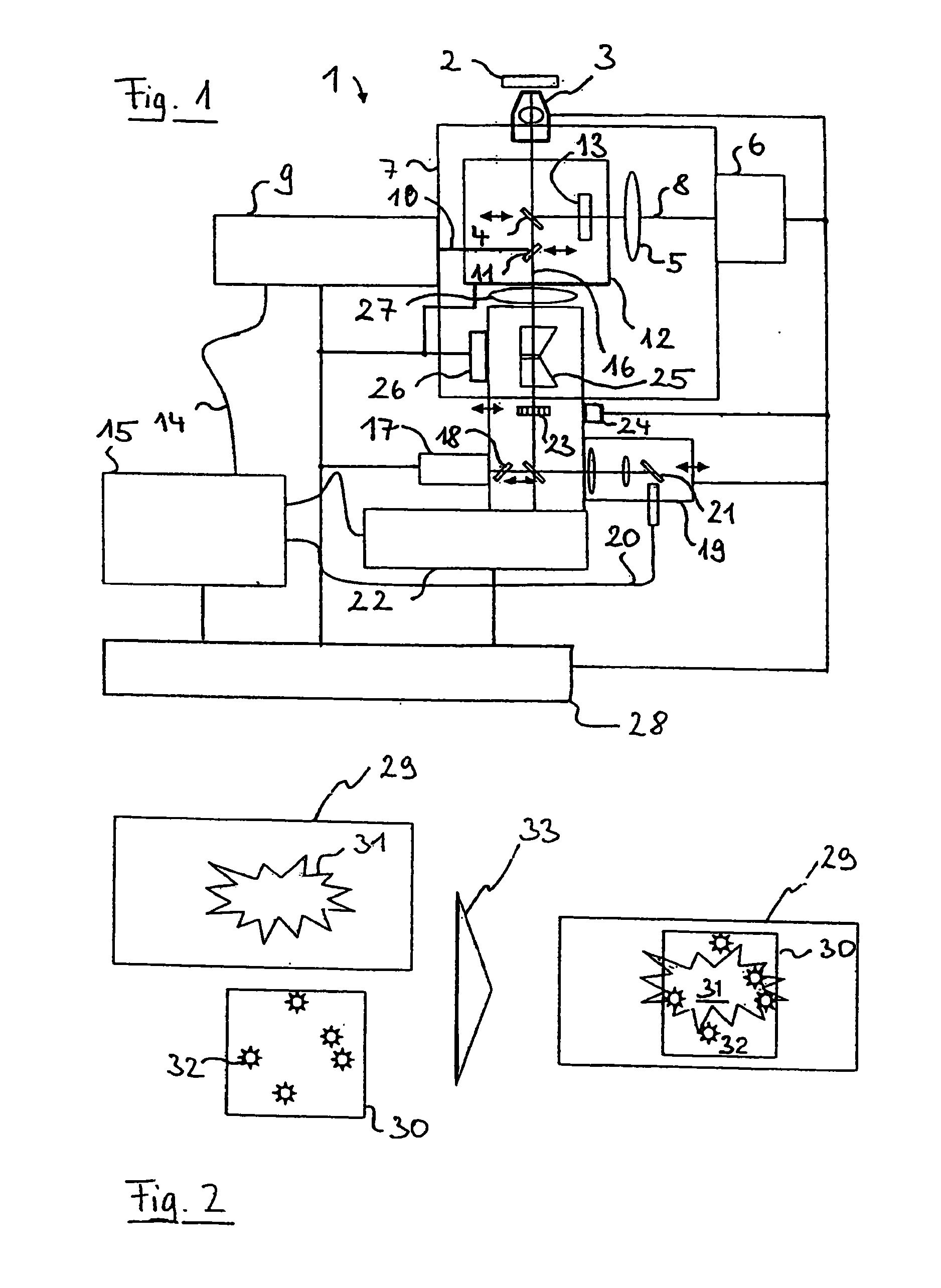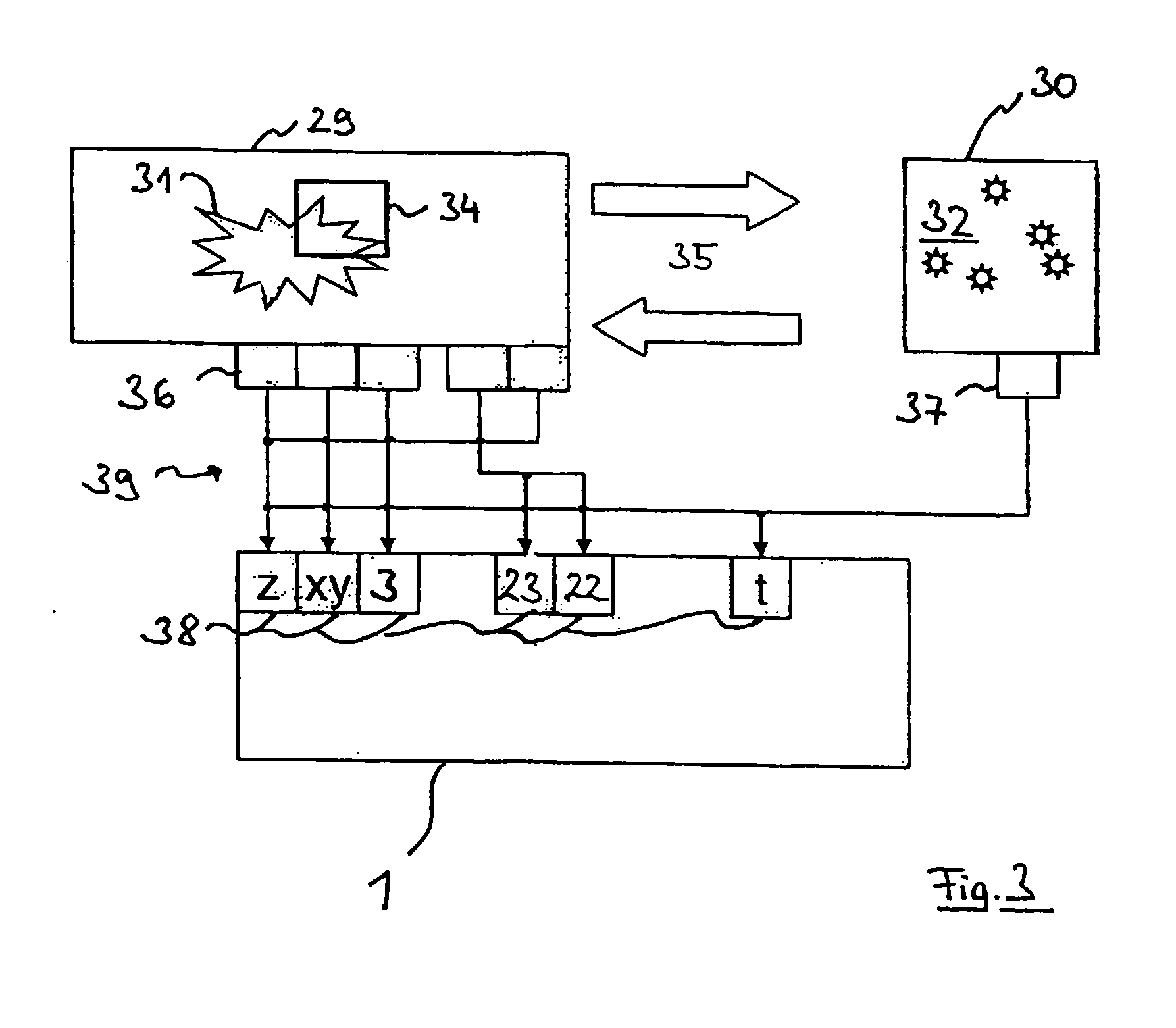Combination microscopy
a microscopy and sample technology, applied in the field of combination microscopy, can solve the problems of reducing the resolution of high-resolution microscopy, and reducing the accuracy of the microscopy
- Summary
- Abstract
- Description
- Claims
- Application Information
AI Technical Summary
Benefits of technology
Problems solved by technology
Method used
Image
Examples
Embodiment Construction
[0047]In FIG. 1, a microscope 1 is represented which can carry out standard microscopy methods, i.e. microscopy methods the resolution of which is diffraction-limited, simultaneously with high-resolution microscopy methods, i.e. with microscopy methods the resolution of which is increased beyond the diffraction limit. The microscope 1 is modular in structure, and it is described in a comprehensive expansion stage to better illustrate the invention. However, a reduced structure with few modules is also possible. The modular structure is also not necessary; a one-piece or non-modular design is likewise possible. The microscope 1 of this example of FIG. 1 is constructed on the basis of a conventional laser scanning microscope and senses a sample 2.
[0048]It has an objective 3 through which the radiation passes for all microscopy methods. Via a beam splitter 4, the objective 3 images the sample together with a tube lens 5 onto a CCD detector 6 which is an example of a generally possible ...
PUM
 Login to View More
Login to View More Abstract
Description
Claims
Application Information
 Login to View More
Login to View More - R&D
- Intellectual Property
- Life Sciences
- Materials
- Tech Scout
- Unparalleled Data Quality
- Higher Quality Content
- 60% Fewer Hallucinations
Browse by: Latest US Patents, China's latest patents, Technical Efficacy Thesaurus, Application Domain, Technology Topic, Popular Technical Reports.
© 2025 PatSnap. All rights reserved.Legal|Privacy policy|Modern Slavery Act Transparency Statement|Sitemap|About US| Contact US: help@patsnap.com



